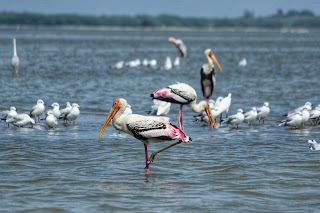Its origins trace back to the 14th century. The Wodeyar family built it as a wooden fortress and later expanded it in1638. Following political instability in 1704, the palace fell into neglect and in 1793, Tipu Sultan demolished it.
After the death of Tipu Sultan in 1799, the crowned young prince, Krishnaraja Wodeyar III, commissioned a new palace in 1803. This was later destroyed by fire during the princess's wedding in 1897. Queen Regent Kempananjammanni Vanivilasa Sanndihana hired a British architect Henry Irwin to design a new palace, which was completed in 1912, at a cost of Rs. 41,47,913 which we see today
Mysuru Palace, is an example of Indo-Saracenic architecture. It honors the legacy of Mysuru and the Wodeyars, similar to the significant Mughal and colonial buildings of yesteryears.
This three-storied palace features square towers with domes, an ornate Durbar Hall, and a Kalyana Mandapam with stained glass ceiling.
Notable treasures include intricately carved doors, a golden howdah, and a jewel-encrusted throne which are displayed only during Dasara. The palace complex also houses a Residential Museum, temples, and shrines. During normal visiting days most of the exhibits are closed.
The main attraction of the palace is however the illumination with 97,000 electric bulbs. This stunning view can be glimpsed for few minutes after the light and sound show, public holidays, and for a longer duration, during Dasara celebrations.
The entry to this palace is as - Adults - 120/, children -70/, foreign nationals -1000/
The palace is open all days from 10.00am to 5.30pm













